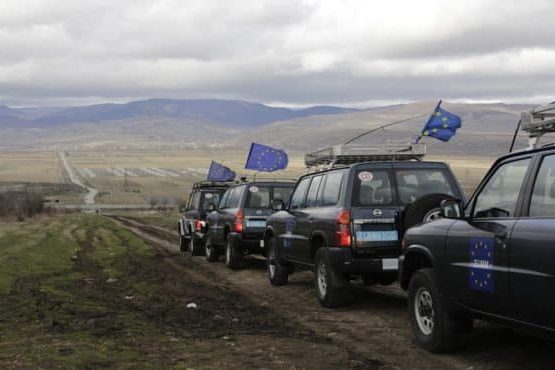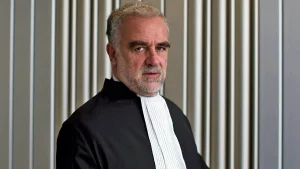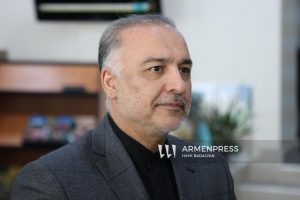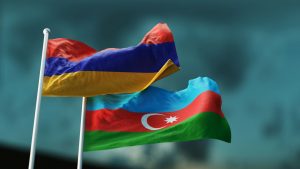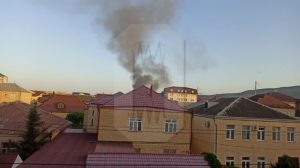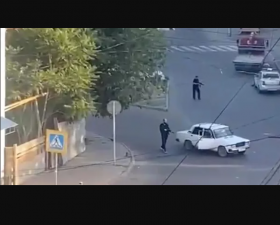Following the decision by the European Union to deploy monitoring experts along the Armenian side of the international border with Azerbaijan, on 20 October, the EU Monitoring Capacity in Armenia became operational. Here are some facts about the mission.
Why is the EU sending a Monitoring Capacity to Armenia?
The EU Monitoring Capacity responds to the agreement reached at the quadrilateral meeting between President Aliyev, Prime Minister Pashinyan, French President Macron and President of the European Council Michel. Upon proposal of the High Representative Josep Borrell, the decision on the setting up of the EU Monitoring Capacity was taken at the Foreign Affairs Council on 17 October. The first EU monitors are operational on the ground as of 20 October. The mission’s mandate is to monitor the situation in the border regions between Armenia and Azerbaijan in order to support confidence building between the two countries and allow the EU to better support the work of the border commissions.
What exactly is the EU Monitoring Capacity going to do in Armenia?
The EU Monitoring Capacity to Armenia will carry out two core tasks:
1) support confidence-building between Armenia and Azerbaijan by monitoring the adherence of both parties to the ceasefire;
2) through regular and ad-hoc reporting on military posture and ceasefire related developments on the ground, the EU team will monitor the situation in the border regions between Armenia and Azerbaijan. This will allow the EU to better support the work of the two parties’ border commissions.
Where exactly will the Monitoring Capacity be deployed?
The area of responsibility (AoR) will be the Armenian side of the internationally recognised border between Armenia and Azerbaijan.
Is the EU Monitoring Capacity a military mission?
No. Only civilian monitors will be deployed.
What does the EU Monitoring Capacity consist of?
It consists of up to 40 EU civilian monitoring experts which will be deployed for a period of two months.
Will there be a similar EU Monitoring Capacity deployed to Azerbaijan?
No. The EU Monitoring Capacity will be deployed on the Armenian side of the internationally recognised border between Armenia and Azerbaijan. The main aim is to support confidence-building between the two countries by monitoring their adherence to the ceasefire.
What was the role of the technical assessment mission which arrived in Armenia on 14 October?
The technical assessment mission of EU experts in Armenia intended to pave the way for the deployment of the EU Monitoring Capacity in the country. Its role was to gather necessary information, conduct an assessment on the ground and establish liaison with relevant stakeholders.
What is the role of EUMM Georgia in the deployment of the EU Monitoring Capacity in Armenia?
In order to ensure a swift deployment of the EU Monitoring capacity, EU monitoring experts from the European Union Monitoring Mission in Georgia (EUMM Georgia) are being deployed..The EUMM is taking operational steps so that its monitoring capacity in Georgia is not impacted. EUMM will continue to carry out its activities in Georgia in all lines of operation. This includes a 24/7, 365 days a year monitoring presence along the Administrative Boundary Lines, to ensure stability in Georgia and the wider region. EUMM Georgia remains dedicated to fully implement its mandate.
What will the EU Monitoring Capacity between Armenia and Azerbaijan be monitoring?
The EU Monitoring Capacity in Armenia will report on military posture and ceasefire related developments in the border regions between Armenia and Azerbaijan. This will allow the EU to better support the work of the two parties’ border commissions. The EU monitors will also provide observations of events taking place along the bilateral border, including human rights related developments. They will not have an investigative role.
Will the EU Monitoring Capacity make conclusions about which side started the escalation on 13 September and give recommendations about steps to take to prevent future escalations?
The EU Monitoring Capacity will report back to the relevant EU institutions and services about its observations along the bilateral border. It will not assume an arbitrary role or draw conclusions of a political nature on the basis of its findings.
Are the EU Monitoring Capacity and the OSCE assessment mission cooperating?
These are two separate missions with two different mandates. The EU Monitoring Capacity will liaise with all relevant international organizations, including the OSCE. There is no overlap between the EU Monitoring Capacity and the efforts deployed by the OSCE.
Is the EU Monitoring Capacity the only way the EU is supporting the de-escalation between Armenia and Azerbaijan?
Based on the agreement by Armenia and Azerbaijan, the EU is closely involved in leading a peace process between both sides.

